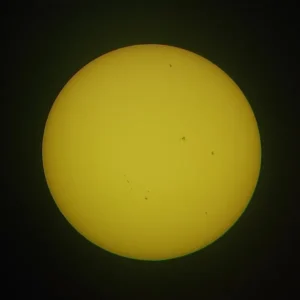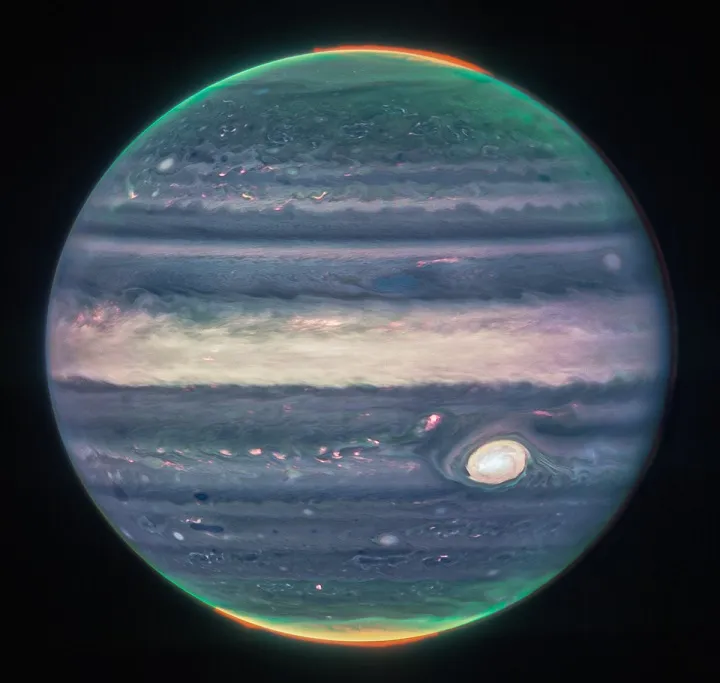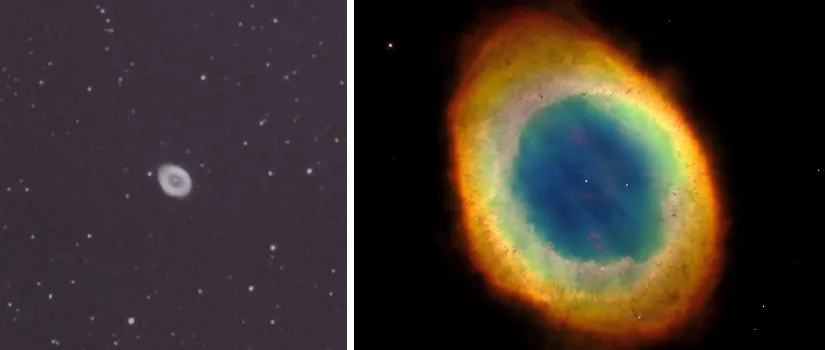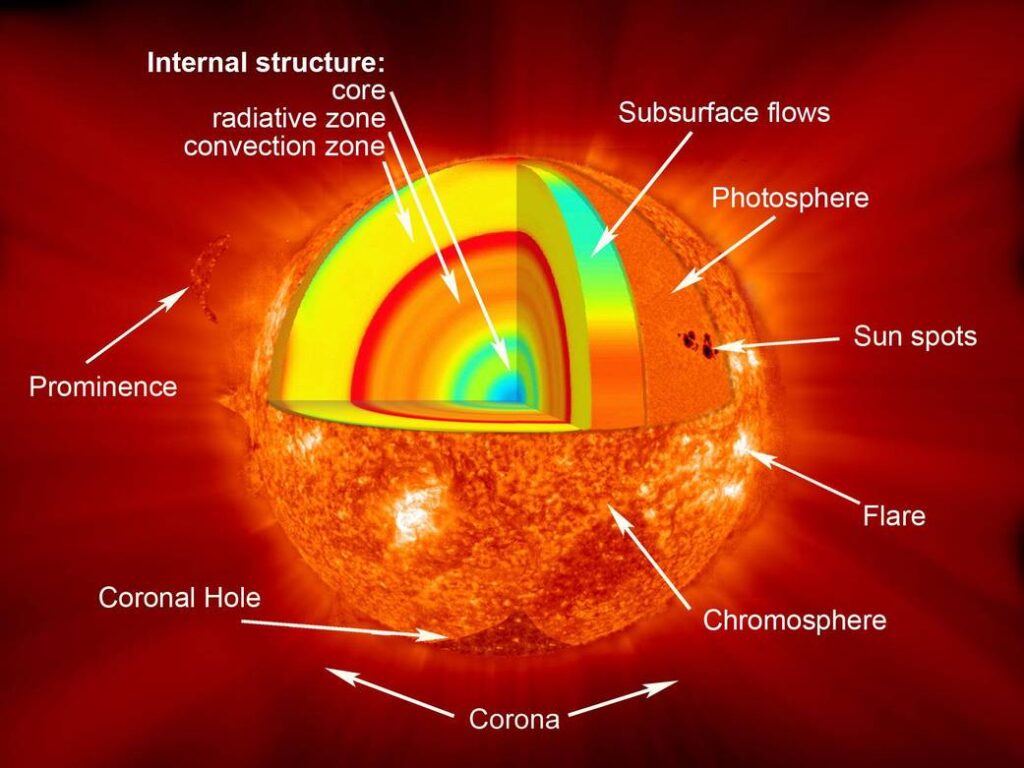
the center of our galaxy
When gazing at the Sun, always use appropriate glasses and filters to protect your eyes and the lenses of your gadgets!
The Sun is a star that was born about 4.6 billion years ago, about 9.1 billion years after the Big Bang. It began to thicken from a cloud of gas and dust due to external influences (for example, the explosion of a massive star). As a result, it attracted more and more material and became smaller and hotter. This is how the so-called protostar is born. Protostars collapse in on themselves after a while and continue to thicken. If their core reaches 10 million degrees, nuclear fission occurs. The formation time of a star similar to the Sun after this several tens of million years.
The Sun is about 150 million kilometers from Earth. It holds our solar system together with its gravity: everything revolves around it. The energy flowing from it is mainly emitted as visible light, ultraviolet and infrared radiation. It also emits radio waves, X-rays and gamma rays in smaller quantities. Only a part of everything reaches us, the EARTH’S ATMOSPHERE absorbs most of it, protecting us from as much harmful radiation as possible. The Sun also emits elementary particles (mainly protons and electrons), which we call the solar wind. We can thank the solar wind for our first protective bubble (heliosphere) in space and the Aurora lights, which are not only created on our planet.

It consists of hot, electronically charged gas, or plasma, and has no solid surface. A glowing ball of hydrogen and helium.
In stars like our Sun, about 600 million tons of hydrogen and helium are fused every second, converting 400 tons of matter into energy.
This plasma rotates at different speeds, so at the equator it takes 25 days to complete a complete rotation around the Sun’s axis, while at the poles it takes 36 Earth days. This is why solar activity occurs: solar flares, sunspots, and plasma ejections.
Sunspots usually form in groups. They appear black on the surface due to their lower temperature. They migrate continuously, with a “lifespan” of 1 to 4 weeks for each group. Solar flares affect the strength of the Northern Lights and can disrupt the smooth flow of radio waves.
Its core is the hottest, with temperatures of over 15 million degrees Celsius. Its surface/atmosphere is the photosphere. This is where 90% of the Sun’s visible light comes from. It is “only” 5,000 degrees Celsius. Above it is the thin chromosphere, which is best seen during a solar eclipse. The “top” of the chromosphere is over 19,000 degrees Celsius.
During a solar eclipse, the Moon comes between the Sun and the Earth, obscuring the Sun.
A Yellow Dwarf in its mid-life. Because it is yellow in color and is considered quite small compared to giant stars (it is of medium category anyway). I won’t go into the separate classifications now.
But!
It will become a Red Giant when it runs out of fuel.
By then it will be much larger, and then it will shed its outer shell, from which the planetary nebula (we perceive them as gray spots, fluff in telescopes; such as: Dumbbell – nebula and Ring – nebula) is born. Its core will turn into an Earth-sized White Dwarf, which will take billions of years to cool down. Currently, the diameter of the Sun is 109x – times that of the Earth…


Its study is done from here on Earth with special solar telescopes, while in space, numerous space probes have tried and are trying to reveal all its mysteries. They tried to collect solar wind, which was successful, but they could not slow down the space probe, so it crashed into the ground and was destroyed.
It is interesting that helium was first identified during spectroscopic (spectral examination of materials) examination of the Sun. It is the only element whose existence was identified from space. This happened because it occurs in terribly small quantities in the Earth’s atmosphere (it can be produced artificially). By the way, it is the second most common element in space.
Be a Nerdy Bird!

[…] can already read about our Sun HERE, it is worth taking a look before you […]
[…] talk first about the ecliptic. This is the apparent path the SUN takes in our sky in 1 year and the orbital plane of our Earth around the Sun. The planets of OUR […]
[…] 310 BC – 230 BC) philosopher, mathematician, astronomer. He was the first to think that the SUN was the center of the Universe and that everything revolved around it. Before our era… But with […]